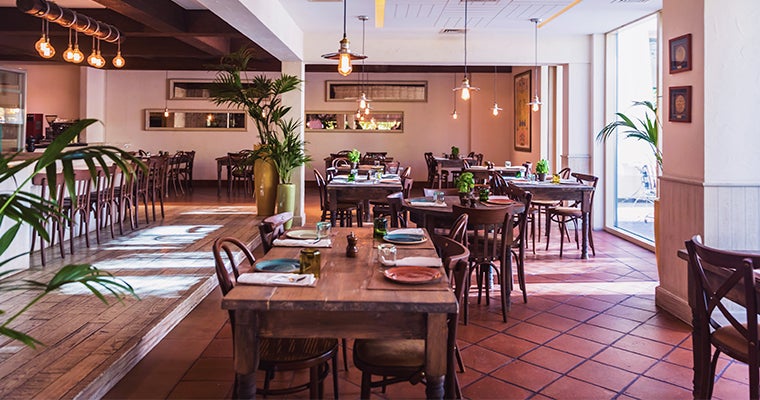Here’s a guide to help your restaurant find the best safety solution.
Restaurants have been safety central since the start of the pandemic. You doubled down on cleaning and sanitizing. You practiced social distancing, wore masks, donned gloves. You did everything in your power to eliminate COVID-19. Well, almost everything. Many operators are discovering how UV cleaning technology and other devices can protect employees and guests.
Science has shown the virus spreads through airborne respiratory droplets, and that has breathed life into technologies aimed at targeting germs and purifying the air. Here is a look at some options and how they work:
UV-C light
What is it? Ultraviolet-C light rays are intense beams of energy that kill potentially dangerous airborne particles, such as germs, viruses, bacteria and fungi by damaging their DNA and RNA. This technology has long been used by hospitals. Restaurants have started to use these air-filtration systems in recent months. Health Canada warns against using UV light products that make false claims about their effectiveness. Only light in the UV-C spectrum is effective, but it must be used correctly to avoid dangers.
How does it work? It uses shortwave ultraviolet light in the C-band (between 200-280 nanometers), far more powerful than direct sunlight or tanning beds. Air is drawn into a purifier where it circulates with UV-C light and is expelled through vents. There are UV-C air purifiers that operate like air conditioners, while staff and customers are present. A more powerful, portable unit that shines light rays is capable of killing particles in the air and on/under surfaces, but it cannot be used when humans or animals are present.
Ozone air sanitization
What is it? Ozone is a gas composed of three oxygen atoms. The Earth’s upper atmosphere consists of an ozone layer. Ozone generators produce gas that reacts with contaminants, such as the COVID-19 virus, rendering them harmless.
How does it work? Oxygen molecules are made up of two oxygen atoms. Ozone gas has three oxygen atoms and oxidizes everything it touches, effectively zapping to clean, disinfect, deodourize and reduce contaminants, particles and pollen. Health Canada advises against using ozone generators in homes because the level of ozone produced may be harmful to your health. Ozone units can be set to run in cycles, when there are no humans or animals present.
Ionization purifiers
What is it? These devices can be placed in your business, and are capable of cleaning and sanitizing air and surfaces. It filters air, removing particles as small as 0.01 microns. That includes most pollen, bacteria, allergens, dust, as well as COVID-19.
How does it work? Think of it like static cling. Ionization units add an electrical charge to particles that pass through the ionizer or to molecules in the air. Charged molecules, known as ions, are attracted to particles with the opposite charge (positive/negative). The filters collect the clumped particles to clean the air.
Other technologies
Air purification systems won’t fit every budget, but there are other high-tech solutions that offer safety solutions.
- Thermal sensor monitors. A tablet-sized screen scans the person standing in front of it, registering a temperature check in seconds. Some versions offer facial-recognition features and can be used to manage staff attendance or track your best customers for marketing.
- Hand hygiene trackers. PathSpot has developed a sensor that checks employee’s hands after washing. It indicates the presence of contaminants and tells the person to wash again, if necessary.
Technology solutions are helpful, but they are not the only answer. In addition to any technology, it’s equally important to provide staff safety training and follow the Health Canada COVID-19 cleaning and disinfecting guidelines.










